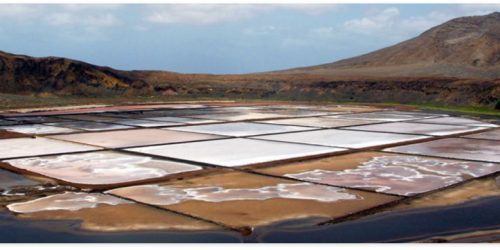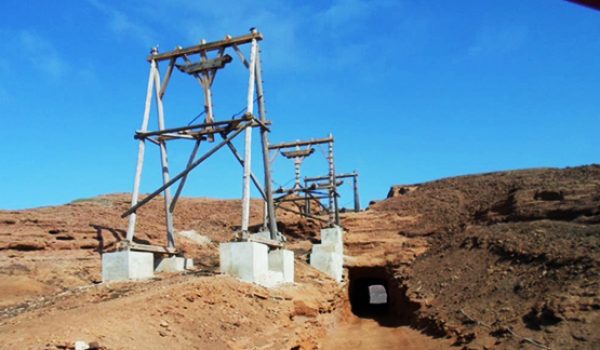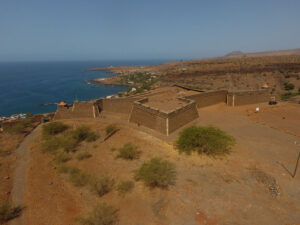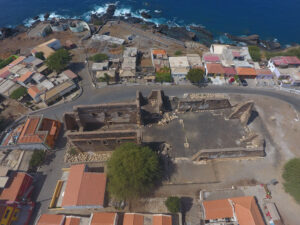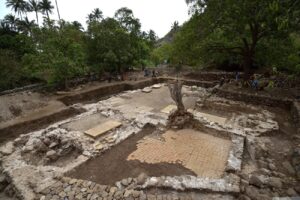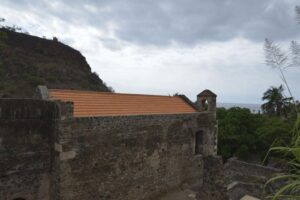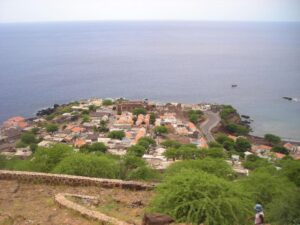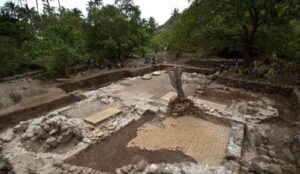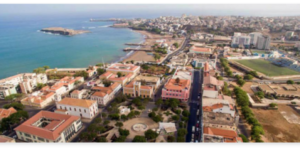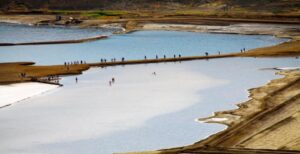Salinas de Pedra de Lume, located in the North East, part of the island of Sal, with an area of 40 hectares, is an exceptional site formed in the crater of an extinct volcano at 39 meters above sea level and 1500 meters from a sheltered cove. The crater was once in contact with the sea on its northern side, through natural channels, allowing water to infiltrate which, due to evaporation, left a deposit of rock salt estimated at more than fifty million tons.
Around this salt mine an industrial society with basic infrastructures such as chapel, school, maternity hospital and social canteen was developed. From this, the type of human settlement is visible, based on the industrial socio-economic divisions, manifesting itself in the different housing estates for the salt mine workers, the engineers and the chiefs who lived there.
ler maisThe extraction of salt was the driving factor for the occupation and implementation of the island, having as mentor the wealthy merchant Manuel António Martins who, around 1796, with families from Boavista and enslaved men from the west coast, settled in the town of Pedra de Lumi. Since then, the island has been sought after by ships of various nationalities, mainly from Brazil, to supply themselves with “white gold”
This golden period, in which the export of salt reached a figure of 30 thousand tons per year, was interrupted in 1887, when Brazil taxed foreign salt as prohibitive duties. After this pause and due to a new situation (African markets, availability of capital), the salt industry would experience a new leverage advocated by Salins du Cap Vert, which left an indelible mark on the local landscape.
However, in 1963, the Democratic Republic of Congo became independent, compromising Cabo Verde's salt industry as a result of the nationalisation of trade in this country. Currently, the extraction of salt is mainly used to make beauty products and thalassotherapy, while the crater receives a large number of tourists annually.
Salinas de Pedra de Lume has an exceptional landscape beauty, given by the polychromatic mosaic of the crater, which ranges from the various shades of white, red, orange, blue and purple as a result of its chemical composition to the green, which comes from the surrounding plants.
Taking into account, the values that the property holds was classified as a protected landscape, through Decree-Law 3/2003, of 24 February, with the objective of preserving the natural and cultural elements related to the existence of a salt exploitation boiler. and that fits into a landscape of singular beauty and ecocultural value. In this sense, it was also classified as a National Natural, Historical and Cultural Heritage through resolution nº 21/2012, of 24 April.
Since 2004, it has been part of the Indicative List of Cabo Verde at UNESCO. Lista Indicativa de Cabo Verde na UNESCO.
ler menos

